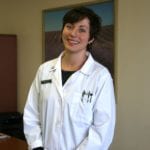Heather Shultz
Graduate of the Won Institute and President of the Association for Professional Acupuncturists in Pennsylvania
To some, the idea of having acupuncture treatments can sometime be a little off-putting. Needles being poked into one’s body to alleviate psoriasis, to fertility issues to the side-effects of cancer treatments; or to curb the pain a runner might experience from the pounding of the pavement on joints… this might sound like witchcraft. But to those who have experienced the life-altering effects of acupuncture, they tell a different story.
– “That’s the fun thing about acupuncture. We treat each patient holistically based on the constitution of the patient.”
What Are The Different Methods of Acupuncture?
Various forms of acupuncture bring different forms of relief. How do you decide which technique is right for the patient? According to Heather Shultz ’10, President of the Association for Professional Acupuncturists in Pennsylvania, and a graduate of the Won Institute, “That’s the interesting about acupuncture. We treat each patient holistically and tailor our therapy to the constitution of the patient.”
Doreen Lafferty, Director of Clinics for the Won Institute, elaborated on the various styles of acupuncture. An experienced acupuncturist might start out with Traditional Chinese Medicine, known as TCM, to help a patient, for example, and then ascertain that Five-Element Traditional Acupuncture is a better option. The reasons, said Doreen, are varied and depend on the patient, the severity of the problem being treated, and the needs of the patient.
What acupuncture is most common and how does it work?
The most common style taught at Won is TCM,” said Doreen, which is based on the eight principles of opposites and the co-existence of yin and yang. “We also teach five-element acupuncture, which corresponds to the Chinese seasons of Summer, Harvest, Fall, Winter, and Spring, which in turn correspond to the human body’s combination of the five elements of wood, fire, earth, metal, and water.”
Additional techniques of acupuncture taught at the Won Institute include Japanese style, as well as Electro-Acupuncture, in use since the 1970’s and French Energetic acupuncture.
What is Auricular acupuncture?
The Won Institute also teaches Auricular acupuncture. Auricular acupuncture is a microsystem, that connects to each major organ through points in the ear, and Trigger Point Therapy which creates immediate relaxation in affected muscle fibers.
At Won Institute, the concentration primarily centers on TCM and Five-element Traditional Acupuncture styles. However, Won brings in subject matter experts to teach one-off courses on types of treatment that are current to today’s issues, and which have been proven to help. Sports acupuncture, for example, is gaining momentum.
What is the best type of acupuncture?
When determining which acupuncture technique is best, the acupuncturist will review the patient’s history. Dietary issues, active or sedentary lifestyle, illness or illnesses to be treated will all be discussed. According to The Acupuncture Evidence Project*, January 2017, there are 117 types of illnesses that acupuncture treatment can help. “The list is growing,” according to Heather Shultz. Conditions such as Restless Leg Syndrome, Post Traumatic Stress Disorder, dry eye, and pelvic pain, among others, are now being successfully treated with acupuncture.
The answer to which technique is right for you depends on all the above elements. The goal is to provide relief from pain. If a patient’s condition is acute, treatments three times per week might be prescribed. From there the patient could be weaned down to perhaps one treatment a month, then once a season or five times per year, according to the Chinese seasons. Eventually, wellness visits would become the ultimate goal.
It’s important for an acupuncturist to have lots of different treatments in his or her toolbox. Seniors, for example, require a different touch with fewer needles than babies. There’s not a one size fits all solution.”
Heather says, “It’s important for an acupuncturist to have lots of different treatments in his or her toolbox. Seniors, for example, require a different touch with fewer needles than babies. There’s not a one size fits all solution.”
*Source:
http://www.asacu.org/wp-content/uploads/2017/09/Acupuncture-Evidence-Project-The.pdf
More Photos of Heather





Hi there. Which acupuncture point should be used to treat Carpal Tunnel Syndrome in my Right Hand Forefinger
Hi Harold, for all your acupuncture questions and needs feel free to email [email protected]